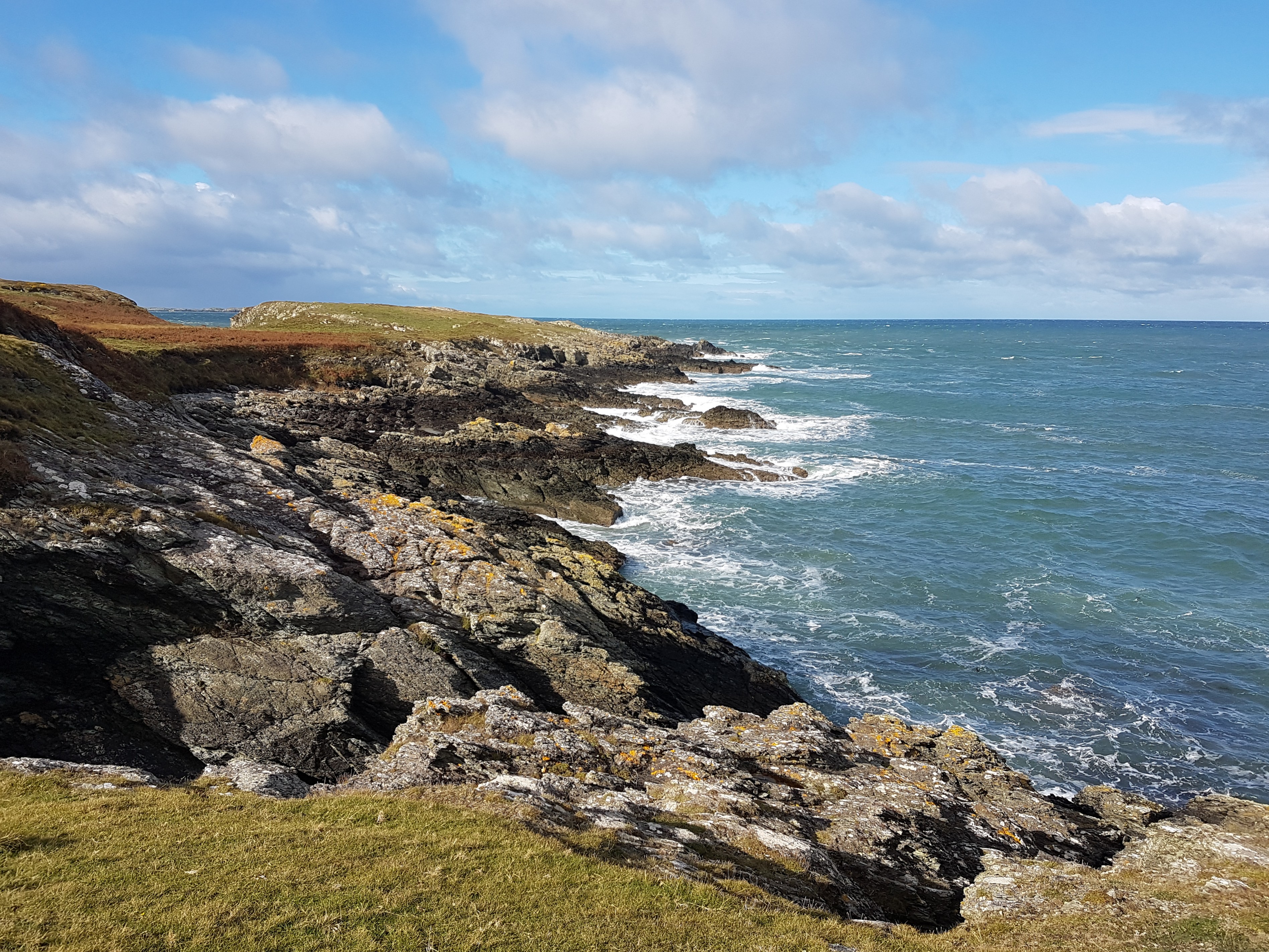Field Notes: Wild Welsh coastal beauties
As Wales goes into national lockdown until 9 November, our Development Manager Tom Hayek dreams of being able to visit its coast again.

Introduction by Tom Hayek
At the John Muir Trust, we talk often about the health and wellbeing benefits of time spent in wild places, and for me the nooks and crannies of our coastline in the UK offer ‘wild benefits’ in a way that nowhere else can quite manage.
Having studied in Bangor, I have fond memories of the wild Welsh coastline which boasts three of Wales’ five Areas of Outstanding Natural Beauty (AONBs).
The AONB designation recognises the importance of protecting this key wild resource, helping to ensure that its wildlife, heritage and often spectacular landscape is preserved so that future generations can get their own coastal ‘fix’ of wildness.
With coronavirus restrictions limiting travel for many this autumn, we asked the local AONB teams to describe the wonderful wild coasts that they look after and share their favourite bits.
Isle of Anglesey by Alun Morgan Owen
Isle of Anglesey’s AONB covers most of Anglesey’s 201km coastline (50km of which has also been designated as Heritage Coast). The coastline of Anglesey, many stretches of which are isolated, contributes much to the island’s appeal. Rugged cliffs, sandy bays, marshes, dunes, the sheltered shores of the Menai Strait and the windswept slopes of Holyhead and Bodafon mountains give an impressive variety of scenery.

Moving clockwise from Holy Island off the west of Anglesey, the island’s northern coastline is dominated by Holyhead Mountain, the cliffs of North and South Stack and rocky coves. Following around the east coast with its mix of vertical limestone cliffs and sandy beaches and the historic town of Beaumaris, you reach the relatively well-wooded Menai Strait and views across to the mainland. Finally, the less-rugged west coast offers stretches of sand dunes and beaches loved by day-tripping families and water sports enthusiasts alike.
The AONB contains many habitats which have statutory protection because of their internationally-recognised nature conservation value; notably heathland, sea cliffs, sand dunes and rocky shores. This is a special area for wildlife-lovers. On a good day you could see choughs, grey seals, harbour porpoises, silver studded blue and marsh fritillary butterflies and, for the really observant, rare plants such as shore dock.
Anglesey’s cultural history runs deep from prehistoric standing stones and burial chambers through to mediaeval and later castles, churches and halls and is a stronghold of the Welsh language, which is spoken by over 50 per cent of its residents.
Find out more about Isle of Anglesey.
Gower by Chris Lindley
Gower’s dramatic coastline is one of the principal reasons that it became the UK’s first Area of Outstanding Natural Beauty in 1956. Often described as ‘almost an island’, the peninsula pokes out into Carmarthen Bay near Swansea.
The varied geology of Gower provides a wide variety of scenery along its 38 miles of coast including superb Carboniferous limestone cliffs and bays, extensive sand dunes and wild saltmarshes.
The south coast’s beaches and bays such as Port Eynon and Oxwich get busy in the summer, but the stretches of rugged limestone cliffs ensure you can still find your own space whatever the season. The three miles between Overton and Mewslade Bay is one of the highlights, with cliff and coastal habitats dotted with remnants of hill forts and other prehistory. Bones found in a cave near Paviland are about 33,000 years old – one of the oldest examples of a ceremonial burial in Western Europe.
For me though, the quieter north coast is my personal preference. Broughton Bay includes a long sweeping spur of sand dunes with the amazing, but sadly derelict, Whiteford Point Lighthouse (pictured above) warning of dangerous shoals at the mouth of the Loughor Estuary and is only accessible on foot with careful planning at low spring tides. This extra-special part of our coast finishes as Whiteford Burrows dunes give way to an eight-mile stretch of wild saltmarsh along the entire north shore of Gower.
Llŷn by Bleddyn Prys Jones
The Llŷn AONB’s spectacular coastline is hugely varied with sandy beaches, inlets, caves, small historic ports and enchanting islands. Most of the coast is also within the Pen Llŷn a'r Sarnau Special Area of Conservation and this extra level of protection has helped to safeguard an impressive community of marine species alongside terrestrial species including the chough which has a real stronghold in this area and features on the AONB’s logo.
Looking inland, there are stunning hills and mountains with spectacular scenery including the ancient Tre'r Ceiri (Town of the Giants) hillfort. If you venture out after sunset, Llŷn is one of the areas with least light pollution in the whole of Wales and is an ideal place to see the night sky at its best.
The heritage of the landscape is evident throughout with historical features around each corner including churches, chapels, holy wells and burial chambers. The important heritage here goes beyond the buildings and this area is one of the strongholds of the Welsh language – with almost 72 per cent of the population speaking the language.
- Please check www.gov.wales/coronavirus for the latest information about specific areas in Wales and travel advice or view this map.
- Photography courtesy of Alun Morgan Owen.